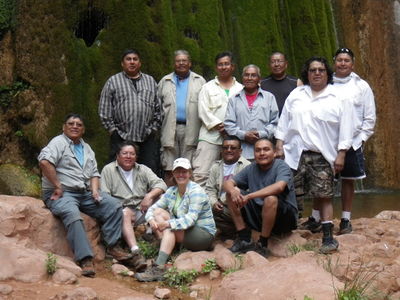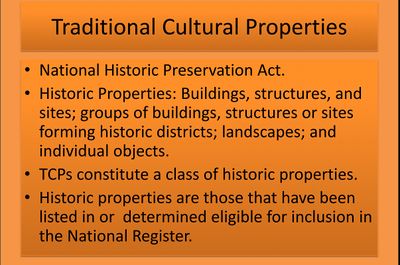Difference between revisions of "Tribal Resources"
Cellsworth (Talk | contribs) |
Cellsworth (Talk | contribs) |
||
| Line 17: | Line 17: | ||
</table> | </table> | ||
| − | [[Image:GrandCanyonTribes.jpg|400px]] | + | [[Image:GrandCanyonTribes.jpg|center|400px]] |
<!-- | <!-- | ||
| Line 51: | Line 51: | ||
{|width="100%" cellpadding="2" cellspacing="5" style="vertical-align:top; background:#f5faff;" | {|width="100%" cellpadding="2" cellspacing="5" style="vertical-align:top; background:#f5faff;" | ||
! <h2 style="margin:0; background:#cedff2; font-size:120%; font-weight:bold; border:1px solid #a3bfb1; text-align:left; color:#000; padding:0.2em 0.4em;">Updates</h2> | ! <h2 style="margin:0; background:#cedff2; font-size:120%; font-weight:bold; border:1px solid #a3bfb1; text-align:left; color:#000; padding:0.2em 0.4em;">Updates</h2> | ||
| − | |||
| − | |||
|} | |} | ||
| + | |||
| + | [[Image:Zuni IMGP2211.JPG|center|400px]] | ||
== Tribal Perspectives == | == Tribal Perspectives == | ||
| Line 64: | Line 64: | ||
---- | ---- | ||
| − | <Span>[[File:TCP- Definition- PIC.jpg| | + | <Span>[[File:TCP- Definition- PIC.jpg|center|400px]]</Span> |
---- | ---- | ||
| Line 75: | Line 75: | ||
---- | ---- | ||
| − | [[Image:TEK- PIC.jpg]] | + | [[Image:TEK- PIC.jpg|center|400px]] |
<!-- | <!-- | ||
| Line 156: | Line 156: | ||
'''2016''' | '''2016''' | ||
| + | * [[Media:ZuniColoradoRiverMonitoringTrip 2016 FinalReport 24March2017.pdf | Zuni River Monitoring Trip Report - Skyship Films ]] | ||
* [[Media:2016 SPC report CLEAN COPY.docx| Southern Paiute Consortium monitoring report]] | * [[Media:2016 SPC report CLEAN COPY.docx| Southern Paiute Consortium monitoring report]] | ||
* [[Media:Final River Trip Report 021217 (1).pdf| Hualapai monitoring report]] | * [[Media:Final River Trip Report 021217 (1).pdf| Hualapai monitoring report]] | ||
Revision as of 15:45, 27 March 2017
|
|
Tribal ResourcesThe lower reaches of Glen Canyon and the river corridor through Grand Canyon National Park, Arizona, have been used by humans for at least 13,000 years. Today, at least nine contemporary Native American Tribes claim traditional cultural ties to this area. Grand Canyon National Park contains more than 4,000 documented prehistoric and historic sites, and about 420 of these sites are located in proximity to the Colorado River. The lower reaches of Glen Canyon contain an additional 55 sites. In addition to archaeological sites, cultural resources along the Colorado River corridor include historic structures and other types of historic properties, as well as biological and physical resources that are of traditional cultural importance to Native American peoples such as springs, unique landforms, mineral deposits, native plant concentrations, and various animal species. Desired Future Condition for Cultural ResourcesTraditional Cultural Properties (TCPs):
|
| Tribal Ecological Knowledge |
Cultural Resources Library |
Tribal Perspectives |
|---|



